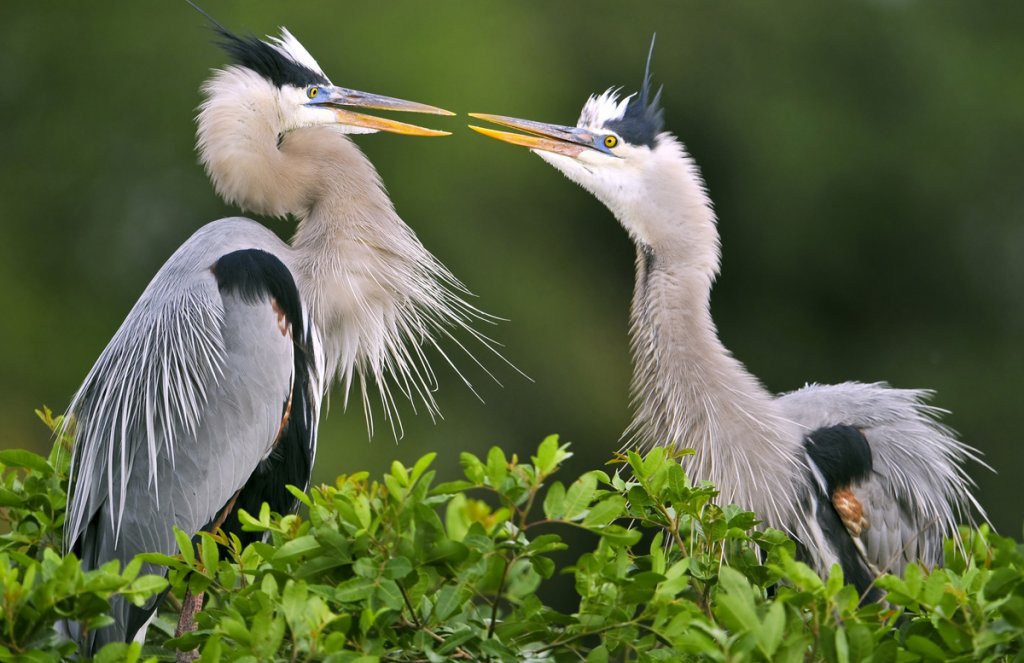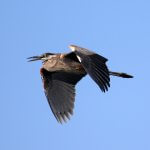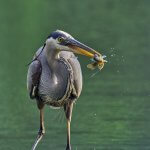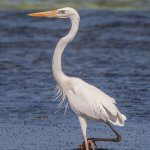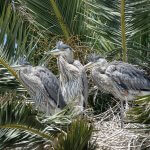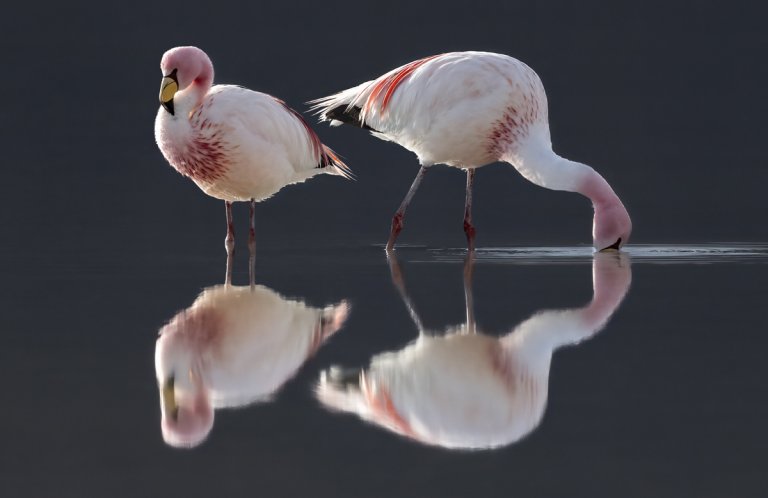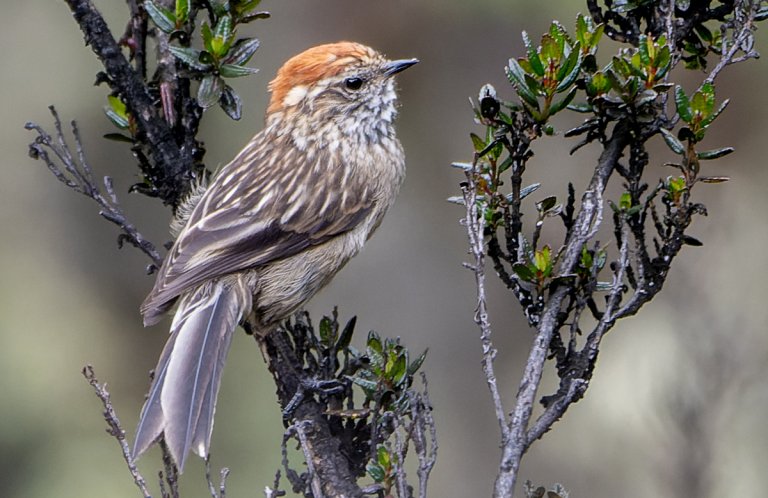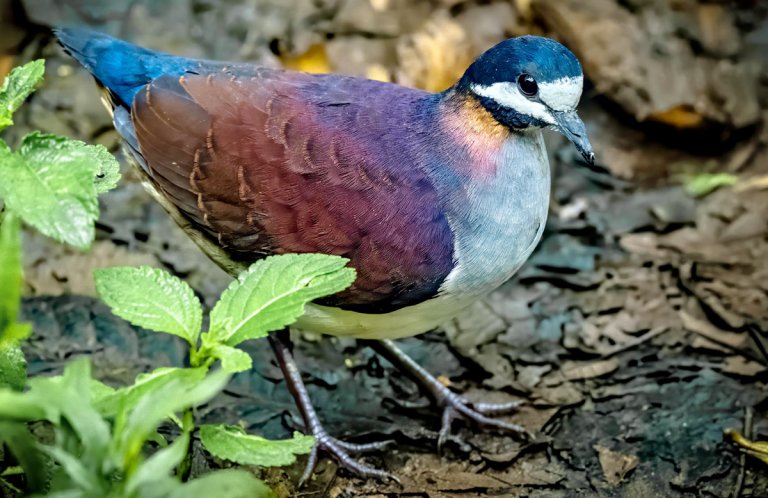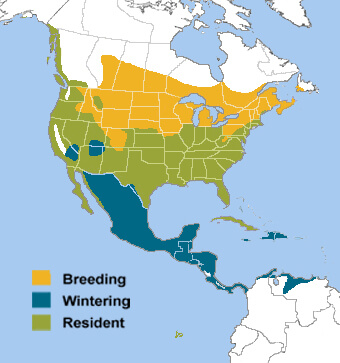
Great Blue Heron range map by ABC
Large, common, and widespread, the Great Blue Heron is perhaps the most familiar wading bird in North America. You might find it foraging near Green Herons and Red-winged Blackbirds in a wetland; or with Sanderlings and Great Egrets on a seashore; or even fishing for koi in a backyard pond. The Great Blue Heron is an adaptable species, and its population is increasing in an era when many other bird species are in trouble.
A favorite subject of bird photographers, there's something ancient-looking about the Great Blue Heron, and there is a reason for that.
Living on Past Success
The Great Blue Heron probably never shared the landscape with Tyrannosaurus rex or any other dinosaur. The Mesozoic Era, or age of the dinosaurs, ended about 66 million years ago. While some birds lived alongside dinosaurs, no extant bird species has a lineage that old. Although its genus Ardea dates back 14 million years, the oldest fossils of the Great Blue Heron are from the Pleistocene Epoch, about 1.8 million years ago. So, this bird's “prehistoric” appearance — with its long, thick bill; curvaceous and powerful neck; and long legs — is more a reflection of successful adaptations that have served the species well over the past 1.8 million years.
That's not to say that the Great Blue Heron has stopped evolving. Various populations changed in size and physical proportions through the millennia in response to differing geographic factors, and ornithologists puzzle over the species' taxonomy. There are between four and nine recognized subspecies, including the “Great White Heron,” a pure-white form found in the Florida Keys and the West Indies. This population is regarded by some as a separate species. When a “blue” Great Blue Heron mates with a “Great White Heron,” the result is a “Wurdemann's Heron,” which has a white head, but otherwise resembles a “blue” Great Blue Heron.
Unique Appearance
The great blue is the largest heron in North America, standing close to five feet tall, with a wingspan of up to 6.5 feet. Its large size, blue-gray coloration, and black-striped head distinguish it from other large North American herons, including the Great Egret and the Reddish Egret.
The only other tall and overall-gray wading bird in North America is the Sandhill Crane, which has a dark bill, red crown, and a posture quite unlike the heron, including a “bustle” on its hind end (formed by the inner-most flight feathers, known as tertials). Cranes fly with their necks outstretched, while herons usually fly with their neck tucked into a tight “S” shape. In flight, the great blue's deep, slow wingbeats and curved neck posture are distinctive.
At some point during the year, the Great Blue Heron can be found near just about any body of water throughout North America. This bird breeds from southern Alaska, across central Canada to Nova Scotia, south to parts of the Caribbean and northern Mexico (rarely in northern Belize as well). The northern breeding population migrates to warmer climes for the coldest months. During the winter, the great blue is found across Mexico, Central America, and the Caribbean, reaching the northern coast of South America. A resident population occurs in the Galápagos archipelago. Although usually solitary outside the nesting season, the Great Blue Heron sometimes migrates in small flocks, either by day or night.
Usually silent, the Great Blue Heron sounds off when disturbed and while on its nest; in fact, its breeding colonies are often quite noisy. Its most-commonly heard call is a loud, “cranky” squawk.
Listen here:
(Audio: Christopher McPherson, XC445084. Accessible at www.xeno-canto.org/445084 · Paul Marvin, XC558334. Accessible at www.xeno-canto.org/558334)
Not a Picky Eater
The Great Blue Heron will eat whatever it can catch with its formidable bill: fish, crustaceans, reptiles, amphibians, small mammals, and birds — especially ducklings. It usually forages alone, locating food by sight. Once a Great Blue Heron spots a meal, it strikes quickly, straightening its long, powerful neck and grabbing its quarry with its spear-like bill, then swallowing it whole. Excellent night vision allows this versatile wading bird to hunt in darkness as well as in daylight.
Colonial Nester
The Great Blue Heron nests in colonies that can include up to several hundred stick nests. These colonies, also called rookeries, are usually located high in trees near or above water, and sometimes on islands, to discourage predation by reptiles and mammals. Sometimes pairs nest in lower shrubs and bushes, or even on the ground. Nesting great blues may even accept human-provided platforms, if they prove safe from predators. Pairs often return to the same colony, and reuse nests from previous years.
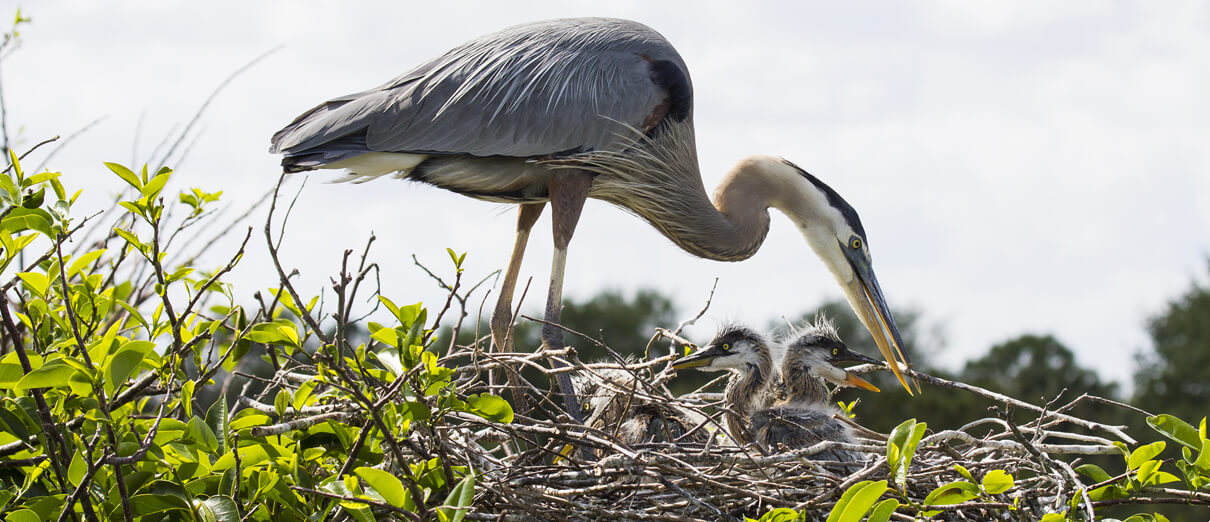
Great Blue Heron at nest with chicks, by Spark Dust, Shutterstock.
Great Blue Herons are monogamous during the breeding season, but they form new pairs each year. Courtship begins as the male selects a nest site, then displays there to attract a female, extending his neck while spreading out his specialized neck feathers (nuptial plumes) and shaking twigs held in his bill. He may also fly in a circle around the potential nest site. Once he attracts a female, the pair will bond through continued displays: twining necks, clattering bills, and raising their nuptial plumes. The male will bring more sticks and branches to the female as she begins her nest, which is a rough platform lined with softer materials such as moss or dry grass.
Once the nest is complete, the female Great Blue Heron lays three to six pale-blue eggs, and both parents incubate in turns for about a month. The young hatch with open eyes and down-covered backs, heads, and sides. Eggs hatch over a period of several days, so nestlings are normally at varying stages of development. Older nestlings often kill their younger siblings or push them out of the nest, particularly in times of food scarcity. This seemingly cruel behavior, called siblicide, has a practical purpose: If there is enough food, more chicks survive; if not, only the strongest make it to adulthood. Siblicide is also seen in other birds such as the Great Horned Owl, Red-tailed Hawk, and Brown Pelican.
Both parents feed their offspring by regurgitating food, and the young leave the nest two to three months after hatching. Once fledged, the young birds remain dependent upon their parents for food for another three weeks or so.
Thriving Despite Challenges
Great Blue Herons were hunted for their plumes until the early 20th century, and over the past century, they have endured habitat loss and disturbance: Wetlands have been drained, water quality has declined, and heron nesting efforts have been disrupted by development and human recreational activities. Although Great Blue Herons are adaptable, ongoing land-use change, especially along shorelines, is a continual threat.
Locally, the Great Blue Heron's success often hinges on people's interest in protecting their sensitive breeding colonies. Fortunately, in many areas, nesting colonies thrive where the birds and their stick nests are left alone during the months-long nesting season.
American Bird Conservancy and other conservation groups are working across North America to protect and restore the continent's wetland habitats, and the birds that call these places home.
Donate to support ABC's conservation mission!





































